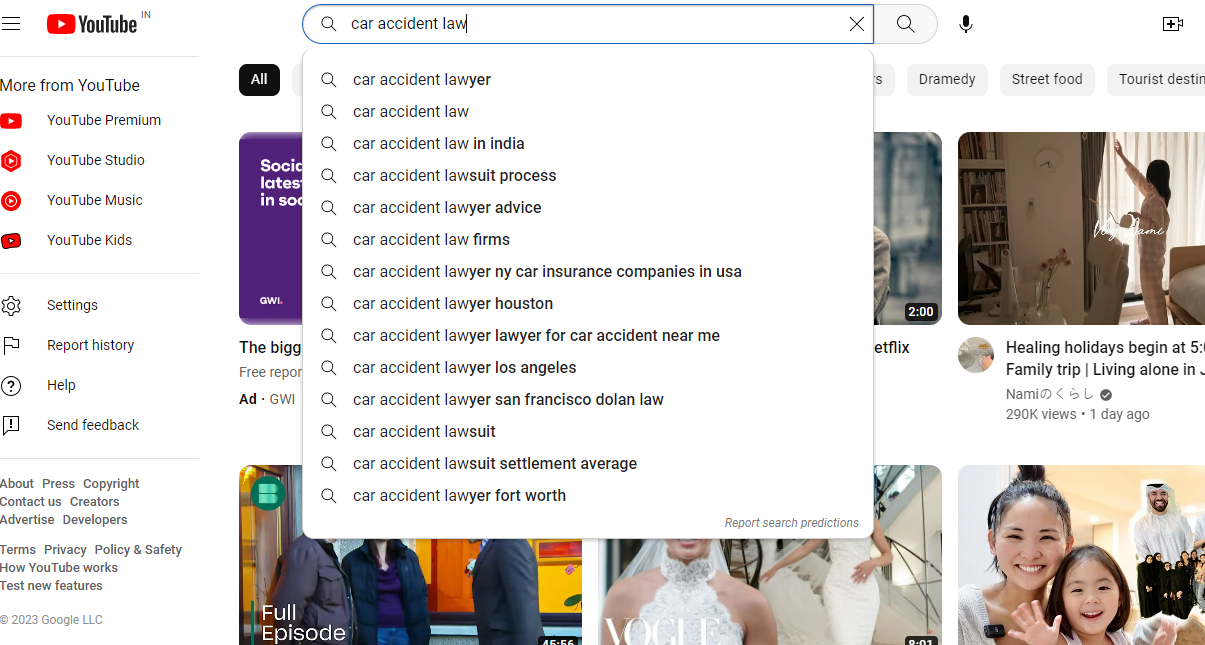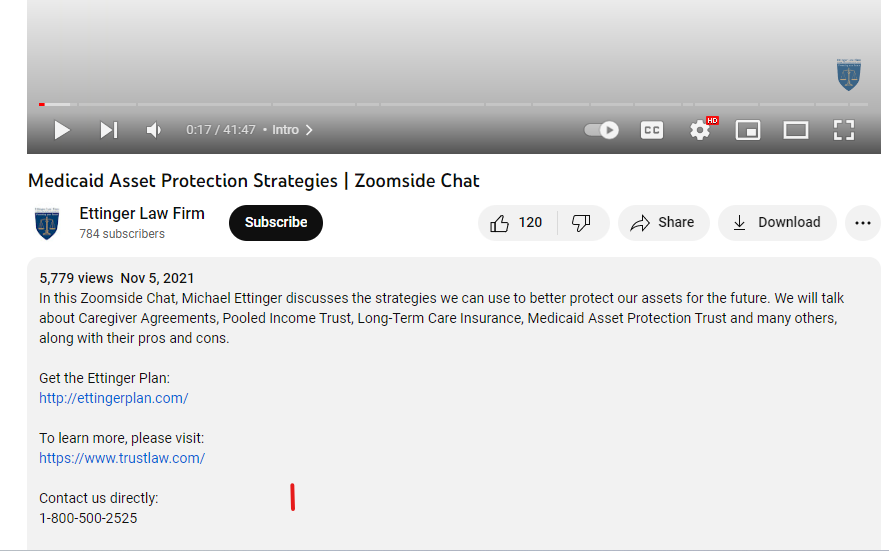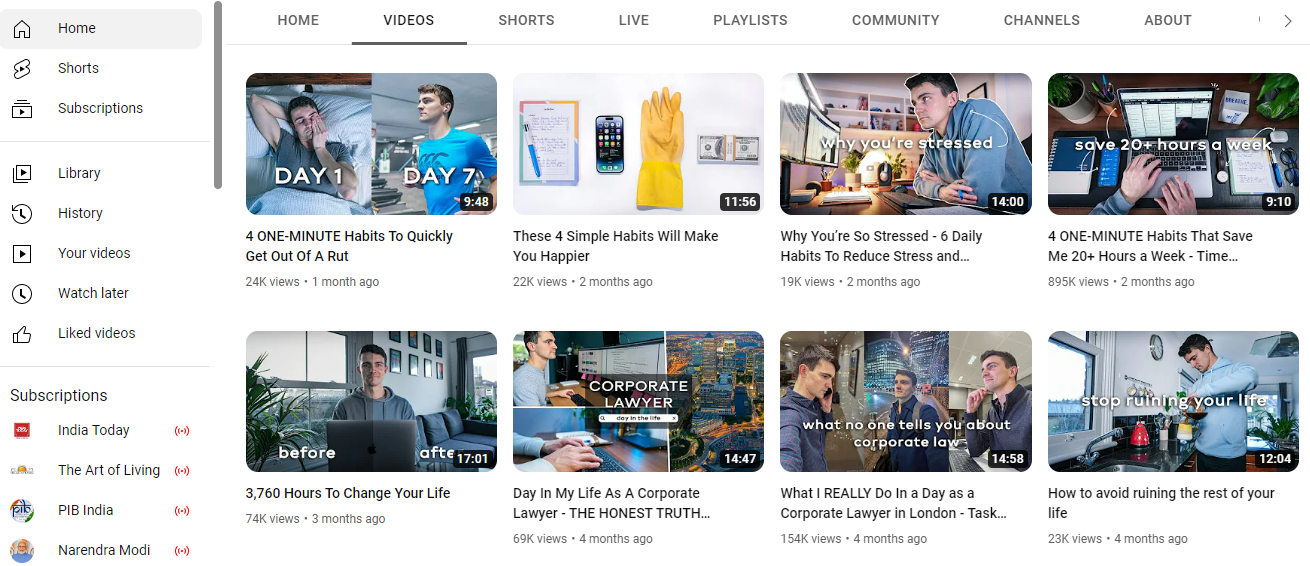- Home
- About us
- Our Services
-
-
- Sales & Marketing
- Video for Sales Marketing
- Video for Growing Businesses
- Brand Video Production Services
- Product Marketing Video Services
- Promotional Video Production Services
- How To Video Production Services
- Explainer video production services
- Digital Content Creation Services
- Commercial video production services
- Studio Hire in North Leeds, UK
- Sales & Marketing
-
-
-
Sales & Marketing
-
-
Employee Experience
-
-
- Blog
Optimising Your Law Firm's Video Content for Search Engines and Social Media


If you have put many hours of effort and research into making videos for your law firm, and still not getting the response you want, it may be time to look beyond just creating high-quality videos. You need to begin with video SEO (search engine optimisation) to get more eyes for your videos.
This article will give you everything you need to know about boosting the discovery of your law firm’s video content. So, let’s get started.
What Is Video SEO and Why Optimise
Video SEO involves optimizing videos for search engine indexing and ranking. It helps improve the chances of the video appearing higher in search results on YouTube, Google, and other search engines, increasing the reach and views. That is why video SEO is relevant for businesses even in the legal industry.
Moreover, after Google, YouTube has become the second most used search engine. YouTube although has its own search intent, keywords, and search rules, since it is owned by Google, it does help the SEO efforts if you link your content with videos.
For instance, if a person wants to know about legal issues related to a car accident, then they would like to see videos showing how these issues can be tackled, who can help them, etc. Apart from these videos, YouTube will also stream some suggested videos based on the search intent and the viewing history.
This means if you can capitalise your keyword search to build a niche for your video content, then your videos can have a long-lasting rank.
Tip: SEO for video works a bit differently. You can’t interchangeably use YouTube keywords and Google keywords. Although there can be some overlaps, consider the search intent separately.
Top 10 Ways to Optimise Your Law Firm’s Video Content for Search Engines and Social Media
Now that you are aware of video SEO, let us explore some practical tips to improve the reach and visibility of your video content.
1. A worthy topic is a must
To increase the chances of getting more views for your video and rank on SERPs (Search Engine Results Pages), select a topic that people are looking for. Additionally, go for a topic that your audience will prefer in a video format instead of text.
You can start by doing some research on video hosting sites like Vimeo or YouTube to understand what type of video content grabs attention. Search how your topic or idea is performing in search results. Look for similar videos. If you notice, very less views or no engagement, then it may not be worth pursuing that topic. So, no matter how much effort you put into the SEO, the video won’t get the expected views if no one is actually searching for that topic.
2. Keywords are the key
Once you have clarity on the topic that your target audience will be interested in, the next step is to make sure they find it. So, the next obvious step is keyword research. Here’s what you need to consider when conducting keyword research.
- Potential clients
- What they are searching for and where
- Client’s needs or concerns
- Topics they have shown interest in
- Your law firm’s unique value proposition
- Keywords working for your competitors
Although a majority of searches happen on Google, YouTube is a preferred platform for video content. However, it is important that you do your keyword research on both Google and YouTube.
You can use any keyword research tool to find the relevant keywords for your legal topics based on the queries that have a high search volume. In fact, you can also use autosuggest or autocomplete features of the platforms to find long-tail keywords for your topic.


3. Don’t skip metadata optimisation
Metadata includes the tile, description, and tags (depending on the hosting site) of videos and helps search engines identify your video. Therefore, for video SEO, it is important that your keywords are part of the metadata.
Experts agree that metadata should have a natural tone as both bots and humans will be assessing the video content based on the information added. So, make sure to work on your title, description, tags, or even hashtags for maximum search engine visibility. Here are some tips that can help.
- Use a good and short copy for your title tag
- Avoid keyword baiting (using irrelevant keywords to make people watch your video) in your title tag to avoid penalties.
- Keep the description short and to the point with keywords included. Google bots look at your description, so make sure your content matches the search intent.


4. Use an eye-catching thumbnail
Although you can choose a thumbnail from your video, it is important that you don’t take this thumbnail lightly! Viewers may be looking at so many videos when searching for a topic, so it is important your thumbnail is visually appealing.
- Use a high-quality, attention-grabbing image that is relevant to the topic of your video.
- Add the title to your thumbnail so that it helps viewers identify the video content.
- Use simple and readable fonts.
- Make sure the image and text when used together don’t make the thumbnail crowded.
- Use a consistent brand style in your thumbnails so your videos are identifiable to your viewers. You can do so by using brand colours, placements of images or text, typography, etc.


5. Add a transcript
Since search engine bots use text transcripts to know more about the context and relevance of your video, it is important to write transcripts. In fact, your transcripts (audio in the video) should also be optimised for keywords for Google, YouTube, or other search engines.
Additionally, video transcripts make your content accessible to all types of audiences including those who may have hearing impairments. Transcripts can also appear in the comments of the video or can be included in the description as well. Make You may also add time makers to the key points, so the viewers can jump to the timestamp to view the content they want.
6. Improve the video’s watch time
It is not just about keywords but also the time viewers watch your video. The watch time is equally important for search engine algorithms. Here’s how you can try to increase the watch time.
- The first few seconds of the video can help viewers determine if the video answers their queries and is worth watching. So, make sure to create a captive opening using editing techniques, attractive text, etc.
- Maintain the consistency and branding of your videos. This includes thumbnails, colors, posting frequency, production value, etc.
- Make use of YouTube’s playlist feature that allows you to populate videos and give your viewers continuity to access all videos in your playlist.
- Encourage your viewers to like and comment on your videos. You can also respond to the comments to make your viewers feel heard and valued to build trust and loyalty.
7. Add video content to your website
Your law firm needs a strong online presence and a website is key. Adding videos to your website will also increase the chances of you being found online. Plus, it gives you full control over how you want to represent your brand.
8. Embed videos on relevant pages
Often ignored, the other way to improve video SEO is to embed video on pages that have relevant content and also have high traffic. Blog pages or service pages are good examples for this. Make sure to embed videos in the first half of the page. Additionally, YouTube picks these embeds as the ranking factor which can make a difference in organic reach.
9. Promote on social media channels
When you promote your videos on other platforms, it improves visibility and ensures a wider reach of your video content. This helps increase social sharing and in creating backlinks that ultimately improve the video SEO. Additionally, this way of promoting videos avoids reliance on ever-changing search algorithms.
10. Track performance
To improve your SEO efforts, you need to track your performance and analyse results regularly. You can use native analytics (YouTube analytics or social media platform-specific analytics) such as the number of views, watch time, shares, comments, traffic source, etc. to know what’s working and what’s not.
You can use these insights to improve video production efforts. For instance, you can assess for which keywords your video is ranking and optimize metadata.
Final Words
Mobile devices have increased video accessibility. However, you need up to your video SEO efforts for your video content to be found and viewed online. Follow the tips discussed above to optimise your law firm’s videos for search engines and social media.
Get in touch with BOXmedia today and let us help you ace your video production and promotion to gain new clients!
